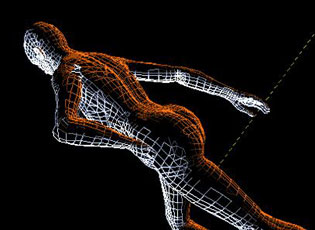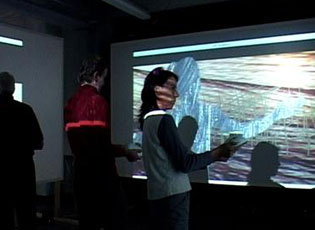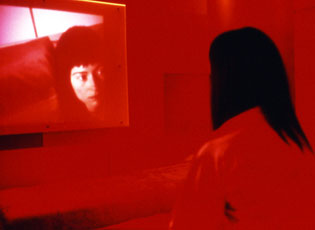| Note: If you see this text you use a browser which does not support usual Web-standards. Therefore the design of Media Art Net will not display correctly. Contents are nevertheless provided. For greatest possible comfort and full functionality you should use one of the recommended browsers. |
![]() Editorial
Editorial
Cyborg Bodies. The End of the Progressive Body.![]() Yvonne Volkart
Yvonne Volkart
In order to examine the specific contribution art makes to the discourses on future bodies and subjects, the point of departure of this topical focus are the artistic reflections on and realizations of cyborgs. Cyborgs here are not only cybernetic organisms, i.e. link-ups between humans and machines, as they are commonly defined. [more]![]()
 | Cyborg configurations as formations of (self-)creation in the fantasy space of technological creation (I): Old and new mythologies of ‹artificial humans› This essay deals with current cyborg configurations in the field of tension between old and new phantasms of the creation of ‹artificial humans.› It introduces the mythologies of the ‹artificial human› one encounters in historical and contemporary texts and images from literature and the arts, all the way to popular science fiction. [more] |
Mythical Bodies II. Cyborg configurations as formations of (self-)creation in the imagination space of technological (re)production (II): The promises of monsters and posthuman anthropomorphisms This second part of the essay presents specific views on contemporary media art. Under the heading of «promises of monsters and posthuman anthropomorphisms» Verena Kuni discusses technological myths of creation mirrored by computer generated visions in contemporary art and game culture. [more] |  |
 | Monstrous Bodies: The Disarranged Gender Body as an Arena for Monstrous Subject Relations This text is based on the notion that cyborgs demonstrate at and with their monstrous bodies and genders exactly those monstrous conditions which they face. The cyborg body is always an effect and symptom body of the neoliberal information society. [more] |
Unruly Bodies. The Effect Body As a Place of Resistance This essay demonstrates that the feminist cyborg fantasy is essentially generated through the notion that resistance is something localized in the body. This is nothing new when one considers that feminists in the seventies already started out from the assumption that the body is a battlefield. [more] |  |
 | The Media/Games of the Doll - Contemporary Artists' Interest in Surrealism Historic materials, related to the phantasy of the doll and ist adaptation in the context of media art is listed under the heading of «Doll-Bodies.» Sigrid Schade discusses the importance of the uncanny for the use of media in art and analyzes the intense inspection by contemporary artists of Surrealist image motifs-mannequin, doll, body fragment, automaton, wax figure-that at the same time comprises a return of the figurative or of body (fragments) to various artistic productions and media. [more] |
Postsexual Bodies. The Making of ... Desire, Digital Artists and Net users have taken possession of cyberspace as a new space for action and experience. It is being celebrated as a free, unrestricted space onto which no limits have been set. The body and its gender modalities are being discovered as central parameters of identification. [more] |  |
 | Transgenic Bodies. Where Art and Science Meet: Genetic Engineering in Contemporary Art1 Art and science Contemporary artists have taken as their theme the effects of the «biological revolution» on people's self-image and on the multi-layered interrelations between art and genetics. However, in contrast to the first encounters between art and genetics in the early twentieth century, today these «scientific» images are decoded through the linking of art and the images of the life sciences and a new way of reading them results. [more] |
Sunshine and Shroud: Cyborg Bodies and the Collective and Personal Self Margaret Morse discusses theoretical as well as artistic implications of computer-based embodiments. Starting from a discussion of Donna Haraway's theories and psychoanalytic aspects related to Jacques Lacan she focuses on the terms «propriocentric body» and «collective self.» [more] |  |
 | Extensive Bodies Yvonne Volkart's interview with the Australian media artist and theoretician Jill Scott, based in Zurich, discusses the changes with regard to the notions of an extended, morphological and relational body. [more] |